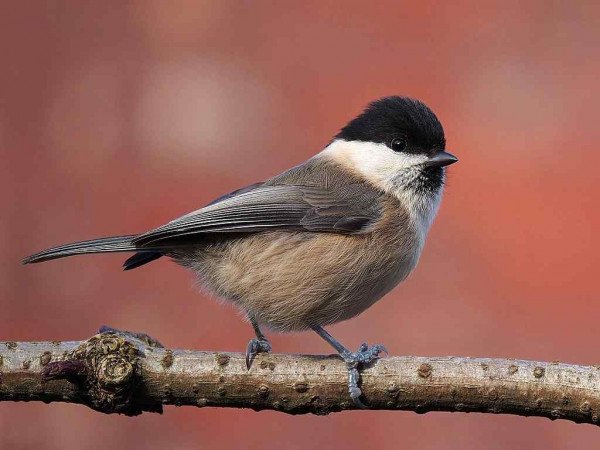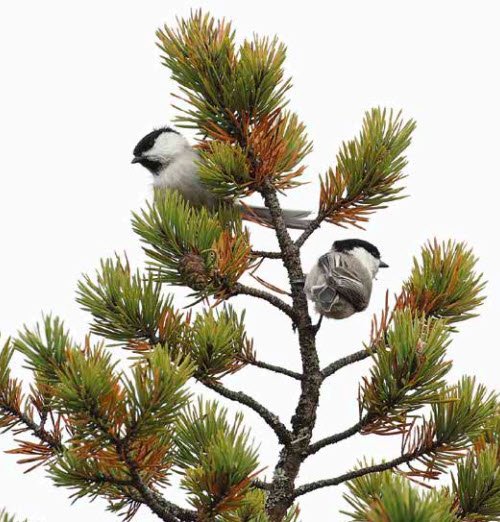Willow tit


Willow tit
NL: Matkop
DE: Weidenmeise
FI: Hömötiainen
Latin name: Poecile montanus
Bird group: Tits
The willow tit is a passerine bird in the tit family. It is a widespread and common resident breeder throughout temperate and subarctic Europe and across the Palearctic. The plumage is grey-brown and off-white with a black cap and bib. It is more of a conifer specialist than the closely related marsh tit, which explains it breeding much further north. It is resident, and most birds do not migrate.
The willow tit is 11.5 cm (4.5 in) in length, has a wingspan of 17–20.5 cm (6.7–8.1 in) and weighs around 11 g (0.39 oz).
In the east of its range it is much paler than marsh tit, but as one goes west the various races become increasingly similar, so much so that it was not recognised as a breeding bird in Great Britain until the end of the 19th century, despite being widespread.
The willow tit is distinguished from the marsh tit by a sooty brown instead of a glossy blue black cap; the general colour is otherwise similar, though the under parts are more buff and the flanks distinctly more rufous; the pale buff edgings to the secondaries form a light patch on the closed wing. The feathers of the crown and the black bib under the bill are longer, but this is not an easily noticed character. However, the more graduated tail (not square) shows distinctly when spread.
Food:
Birds feed on insects, caterpillars, and seeds, much like other tits. This species is parasitised by the moorhen flea, Dasypsyllus gallinulae.
Song/call:
The commonest call is a nasal zee, zee, zee, but the notes of the bird evidently vary considerably. Occasionally a double note, ipsee, ipsee, is repeated four or five times.

